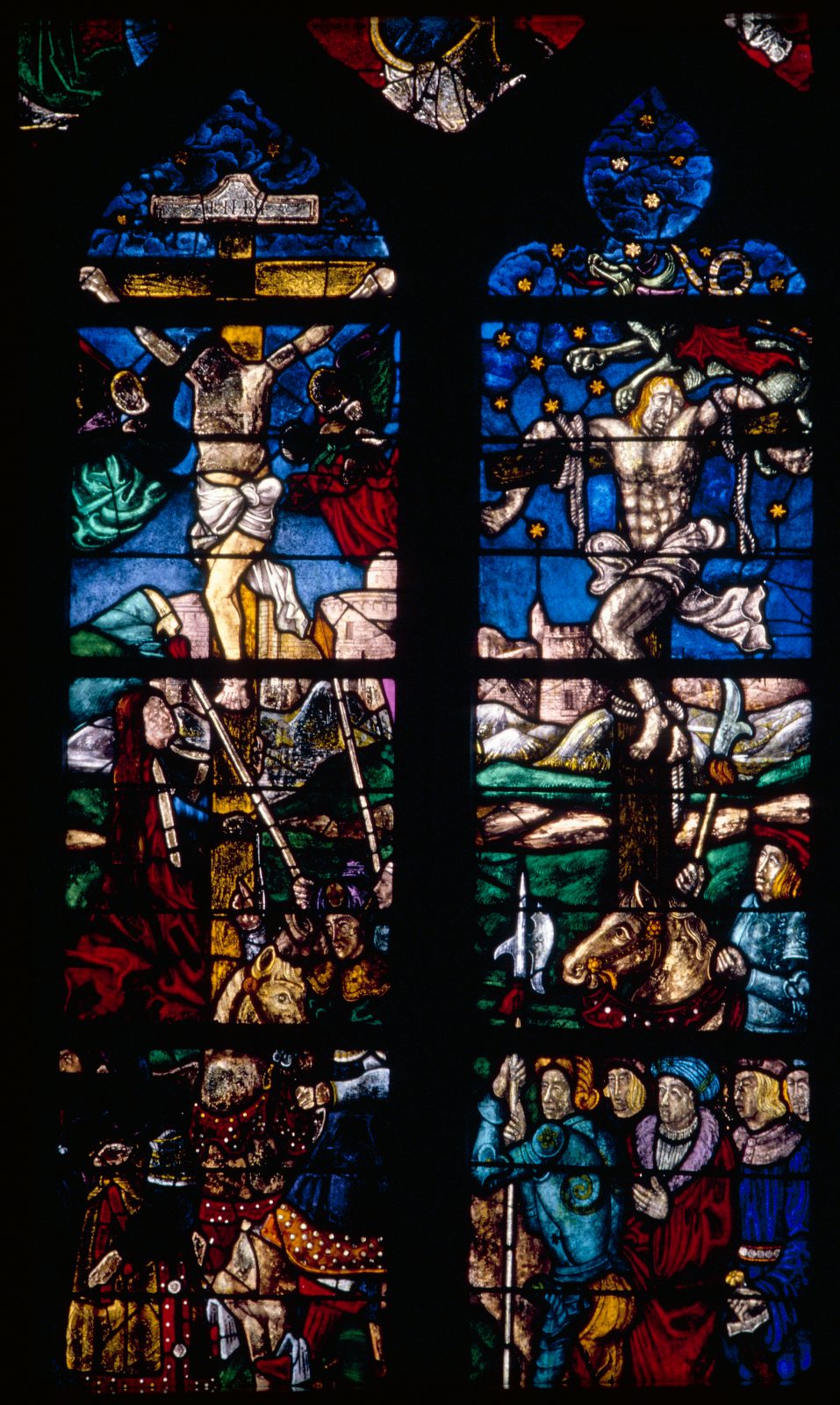About
The church of Saint-Aventin in Creney-près-Troyes has existed since at least the 12th century.
The current building was built from east to west in the 16th century, with only the lower parts of the tower dating back to the 13th century. The Renaissance-style south portal dates from 1557 and may be the work of master masons Jademet and J. Thiedot, given its stylistic proximity to the old west portal of Saint-Parres-aux-Tertres, which bears their signature. The porch was rebuilt in 1847-1848. The building is a five-bay, rib-vaulted, three-vessel hall church with a three-sided apse. The liturgical choir encroaches on the last two bays of the central nave, and the bell tower is located on the third bay of the same nave. The side aisles are roofed at right angles to the axis of the building. The west facade features a portal leading to an entrance vestibule. An important set of stained glass windows was created around 1510-1520 during the reconstruction work. Numerous inscriptions allow us to date them and to identify the local personalities who commissioned them. Among other models, the stained glass windows were inspired by those of the Madeleine church in Troyes, and are thus closely related to the "Trojan school". The windows, restored in 1894 by Gaudin, were removed in 1939 and restored again in 1957-1958 by Max Ingrand. They feature both large scenes spanning several panels, such as the Adoration of the Magi painted in 1520 for François Hennequin and Louise Molé, and figures of patron saints, such as Henri, Barbe, Catherine and Marguerite with Henry de Foissy and Marguerite de Chamrémy. The latter also features scenes from the Passion of Christ. The Crucifixion was executed in 1520 for the parish priest Nicolas Godet. In the glass panel donated by François Hennequin and Louise Molé, scenes from the Circumcision of Christ and the Adoration of the Magi take place in Renaissance-style architectural interiors. Finally, the panels donated by Jehan Gubelin and his wife, in the first quarter of the 16th century, are dedicated to the Virgin Mary, with scenes of the Annunciation, the Dormition and the Coronation of Mary.The church was listed as a historic monument in 1907, and the stained glass windows were given object status on August 9, 1894.
Rate
Gratuit


